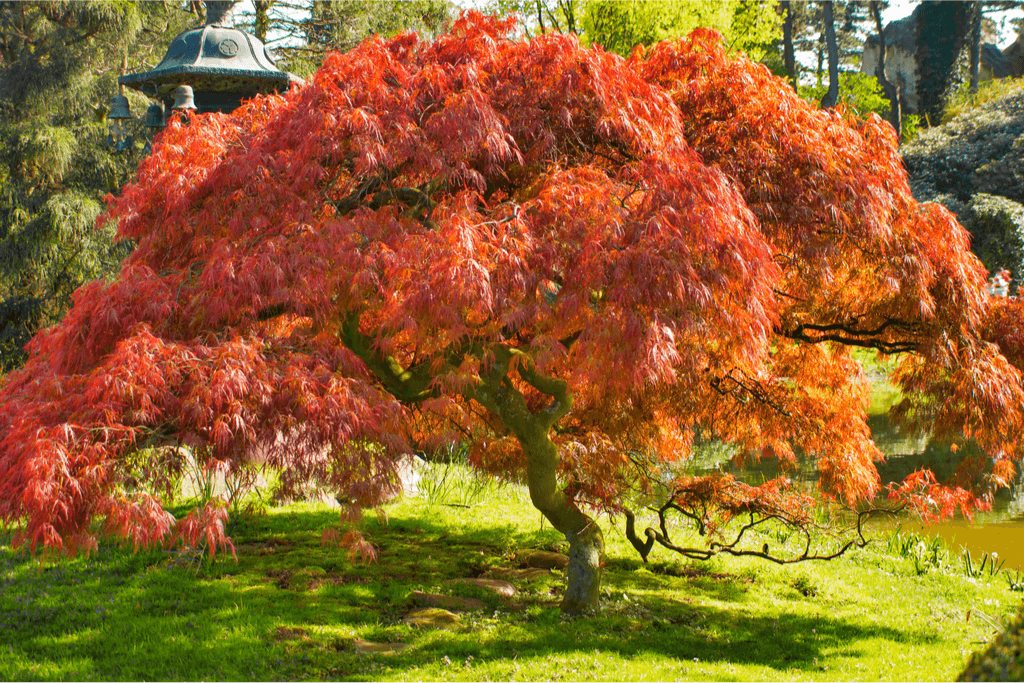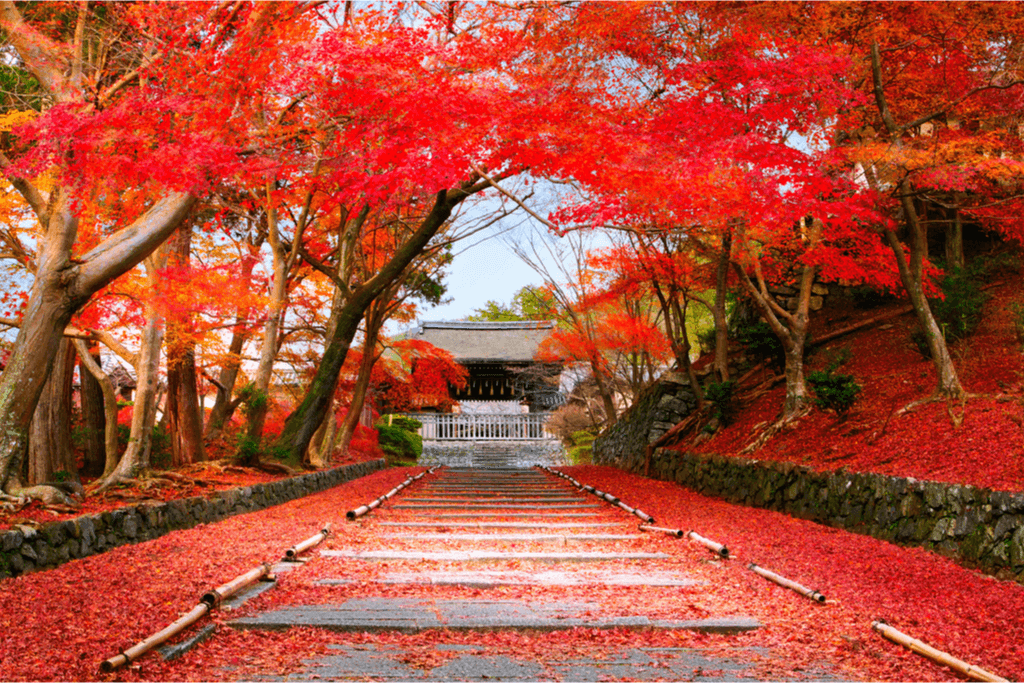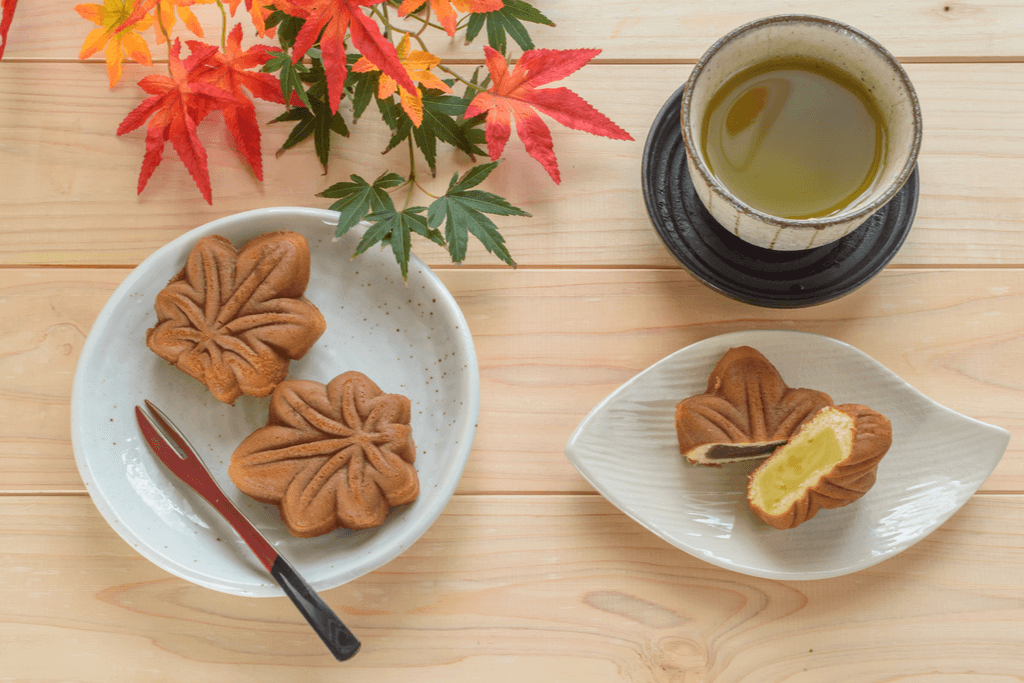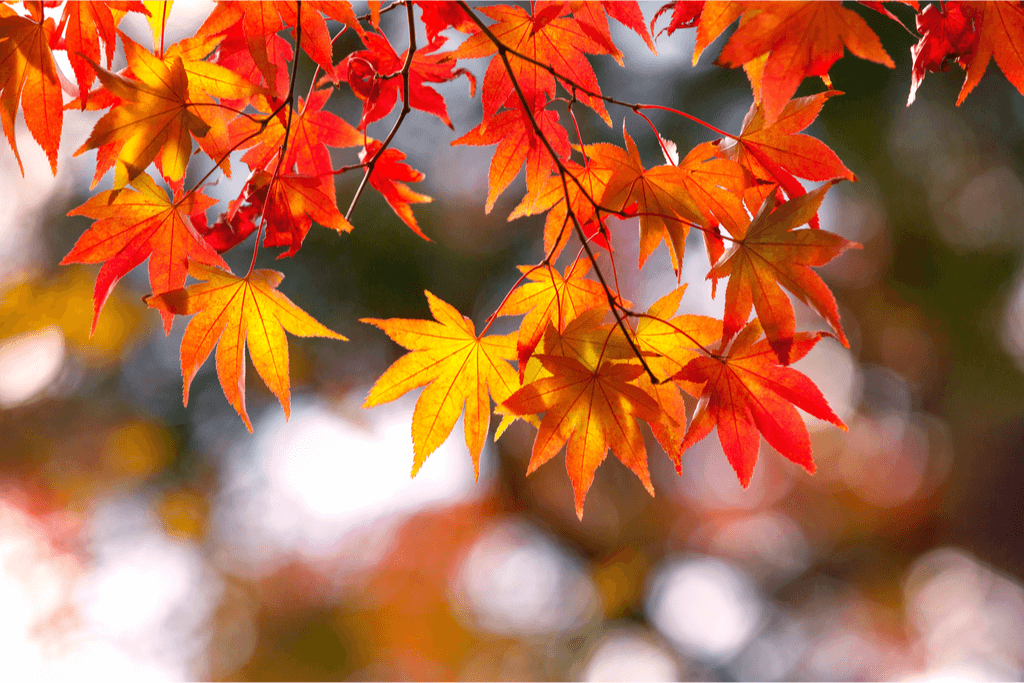“Momiji” (紅葉)refers to the brilliant red maple tree, which has the same kanji as “koyo” (紅葉). Koyo references the autumn season when the leaves change to beautiful colors like purple, gold, and especially red. Similar to the crowds that gather for hanami in spring, many people in Japan also enjoy the autumn foliage called “momijigari.” It is a popular tradition for Japanese people to celebrate one of the most beautiful features of autumn. Let’s take a closer look at what makes momiji unique.
Table of Contents
ToggleWhat Makes Japanese Maple “Special”?
The Latin name for the Japanese maple tree is “Acer Palmatum.” “Acer” means “sharp,” which references the blades of the leaves. While “Palmatum” means “hand-like,” which refers to the leaf’s shape. Although the Japanese maple tree is native to Japan, China, and Korea, the herb has been mainly cultivated in Japan for a long time. The Japanese maple tree is a small and slow-growing species that grows at the rate of one to two feet per year. Moreover, they can only grow to four to thirty feet in maturity.

Maples in different countries are appropriate to grow in different zones. The zone is a geographical area where a given plant can grow based on climate and temperatures. For example, Japanese maples prefer (hardiness) zones 5 – 8 in the middle and higher temperature areas.
Japanese maple trees can live for a hundred years or more in a favorable environment. In addition, Japanese maple trees, particularly bonsai trees, are popular choices for home decor. Bonsai trees are commonly present in Japanese homes for reasons related to art and spirituality.
What is the Kaede maple tree?
The Kaede maple tree, also known as the Japanese maple (Acer palmatum), is a stunning and highly coveted ornamental tree from Japan. Its name, “kaede,” translates to “maple” in English. Renowned for its breathtaking beauty, the Kaede maple has delicate, palm-shaped leaves (also known as “baby’s hands”) that display vibrant colors throughout the seasons, including shades of red, orange, and yellow.
This deciduous tree is valuable in landscaping and gardening due to its graceful form that elevates any outdoor space. From residential to traditional Japanese gardens, the Kaede maple tree is a captivating focal point, casting a spell of natural beauty and tranquility. With its rich cultural significance and visual appeal, the Kaede maple has become a cherished symbol of Japan’s horticultural heritage.
The Symbolism and Spiritual Meaning of Japanese Maple Trees
Japanese red maple trees symbolize many things, such as abundant blessings, peace, beauty, patience, survival, the arrival of autumn, and so on. It is common to see Japanese people plant maple trees in their houses to bring luck and add good value to their houses, believing in the spiritual meaning of red maple trees.
Abundant Blessing
Japanese maple trees produce “samara” fruit in large amounts during September and October. This is because samara is a winged seed that scatters via a northwesterly wind at that time of year. Samara seeds are also edible during the springtime. However, also consult a physician before ingesting anything in the wild.
Peace
The Japanese maple tree is a significant tree in nature, or “kito,” which means calm, rest, or peace. The symbol of peace keeps people calm and avoids stress and accidents to create a safe and happy life.
Beauty
The Japanese maple tree is known for its elegance and tastefulness, which many people find appealing. Even its shrubs have beautiful colors. Like most trees in the autumn, momiji leaves turn red, brown, purple, and gold. Because of their beauty, maple leaves are a common motif in traditional Japanese clothes. Kimonos, in particular, sport this lovely look, which is perfect for both autumn and winter.

Looking to enjoy the upcoming koyo season with momiji? Check out Sakuraco! Sakuraco sends traditional Japanese sweets & snacks from across Japan to your door so that you can explore traditional Japanese taste at your convenience!
Patience
Because maple trees take so long to grow to their most mature height, they are a common symbol of patience. For instance, maple trees must take about twenty to thirty years to reach their required length or height. To humans, momiji further represents that we must take time to reach our goals. Rushing to our goals will only make things worse. This is why we appreciate the timeless beauty of the Japanese maple tree.
Endurance
Red maple trees in Japan are famous for their association of partial shade areas so that they can still grow mature and beautiful even though there is just a little exposure to sunlight. These trees reflect to humans the ability to survive without giving up no matter how difficult the challenge they have encountered or how bad the environment exists.
Arrival of Autumn
The red maple leaf represents the end of summer and the coming of autumn. The Japanese maple tree leaves usually start to emerge in summer with green coloration, varying from red to reddish-purple to orange to yellow in autumn. They are a beautiful shade of red, representing the warmth and vitality of autumn.

Momiji Food
The momiji tempura is sold at several shops of the “taki michi,” leading to the waterfall in the Minoh Park area. It is a local food in northern Osaka sold in Minoh areas and during the koyo season. The ingredients include flour, sugar, sesame seeds, momiji leaves, and vegetable oil. The recipe was made over 1300 years ago on Mt. Minoh and appreciates the color of leaves in the fall season. It takes one year or longer to eat after collecting the leaves from the trees and washing and preserving them with salt.

Speaking of the taste of momiji tempura, it is lighter and thinner than regular tempura. Moreover, it is deep-fried with sugar and sesame. It tastes slightly sweet, salty, and oily, which is appropriate to have with a beer for enjoying this great snack.

Momiji-shaped manju is also very popular. It’s a local specialty in Hiroshima Prefecture. It’s a sweet bun made of buckwheat and mochi, usually with a red bean paste filling. Like taiyaki, this manju’s filling can vary from custard to chocolate and even cheese.

What are your thoughts on momiji? Have you ever had momiji-themed food before? Let us know in the comments below.










